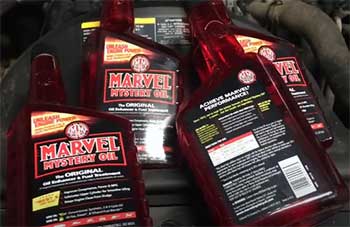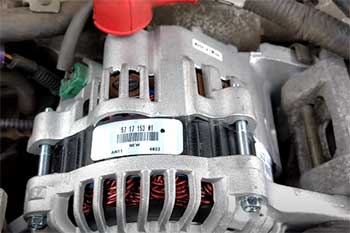I’m all about smart driving, and the RedTiger F7NP dash cam is a game-changer you need in your car. Its sharp 4K front camera, intuitive app, and features like GPS and parking mode deliver peace of mind on every trip.
Whether you’re dodging reckless drivers or capturing epic road trips, this device has you covered. Trust me, you’ll want this sleek gadget on your windshield before your next drive—it’s a no-brainer for safety and convenience.
My Journey With The RedTiger F7NP Dash Cam
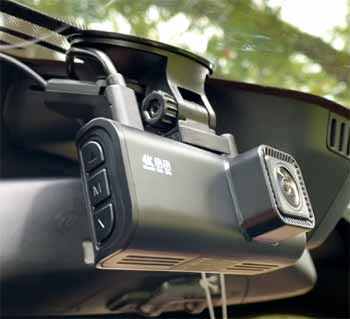
Imagine cruising down a coastal highway, waves crashing on one side, and your RedTiger F7NP quietly recording every detail in vivid clarity.
I picked up this dual-channel dash cam a few months ago after a near-miss with a distracted driver who veered into my lane.
That scare convinced me I needed a reliable witness on the road, and the F7NP has been my trusty sidekick ever since.
Installing it was a snap.
The suction cup mount gripped my windshield like a champ, and the adhesive rear camera was straightforward to place on my back window.
The 3.16-inch IPS screen is compact yet clear, perfect for quick footage checks without cluttering my view.
The RedTiger app, which connects via the camera’s Wi-Fi, made tweaking settings and downloading clips to my phone a breeze. The first time I watched the 4K front footage, I was blown away—license plates, road signs, even distant hills were crystal clear, even at dusk.
One evening, a car bumped my rear in a parking lot and took off. Thanks to the F7NP’s parking mode (with the optional hardwire kit), I had time-lapse footage that nabbed the culprit’s plate. That clip was a lifesaver for my insurance claim.
The built-in GPS tracked my speed and route, adding weight to my story. On long drives, the loop recording keeps things hassle-free by overwriting old files. This isn’t just a dash cam; it’s like having a vigilant buddy who’s always watching.
The F7NP has changed how I drive. I feel more confident knowing I’ve got a record of every mile, whether it’s for safety or just capturing a killer sunset. It’s not perfect, but it’s been a reliable partner through city commutes and cross-country adventures.
Why The RedTiger F7NP Shines?
The F7NP has some quirks, but its strengths make it a standout. Here’s what I love about it, broken down into its best features.
- Stunning Video Quality
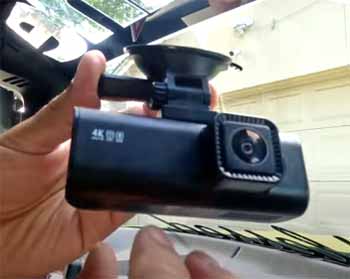
The front camera’s 4K resolution (3840x2160P) is a showstopper.
It captures everything—license plates three cars ahead, street signs in the rain—with jaw-dropping detail.
The 170° wide-angle lens covers multiple lanes, minimizing blind spots.
The rear camera, at 1080P with a 140° angle, isn’t as sharp but holds its own, especially for tailgaters.
With an F1.5 aperture and WDR tech, low-light footage is impressive. I’ve rewatched clips of nighttime drives, and the clarity feels almost movie-like.
- Seamless RedTiger App
The RedTiger app is a gem. It connects to the camera’s 2.4GHz Wi-Fi, letting you view live feeds, adjust settings, or save clips to your phone. I’ve shared scenic drive videos with friends in minutes.
The app’s interface is straightforward, and I love toggling audio or modes without touching the camera. You have to disconnect from other Wi-Fi networks to link up, but that’s par for the course with devices like this. It’s a small trade-off for such slick control.
- GPS for Added Confidence
The built-in GPS is a quiet hero. It embeds speed, location, and route data into your footage, which is a lifesaver for disputes or insurance claims. I once used GPS logs to prove I wasn’t speeding in a minor fender-bender.
You can review this data via the app or a GPS player on your computer. The suction mount doubles as the GPS receiver, so it’s always on when the camera is powered. This feature gives me peace of mind that my story has solid backing.
- Robust Parking Mode
With the optional hardwire kit, the F7NP’s 24-hour parking mode is a game-changer. It uses time-lapse or G-sensor-triggered clips to monitor your parked car. That parking lot hit-and-run? Caught on camera because of this mode.
It’s not buffered, so it doesn’t capture seconds before an impact, but it’s still a strong deterrent against vandals or careless drivers. Just ensure your car’s battery can handle the power draw, or you might need a pro install.
- Sleek and Sturdy Build
The F7NP’s design is discreet yet durable. At 97x32x20mm, it hides behind my rearview mirror, barely visible from outside. Its capacitor-based power system handles extreme temperatures better than battery-powered cams, perfect for my sweltering summer drives.
The included 32GB SD card is a nice bonus, and it supports up to 256GB for more storage. After months of daily use, it’s still rock-solid.
- Loop Recording Simplicity
The loop recording feature keeps things low-maintenance. It automatically overwrites old footage when the SD card fills up, so I never worry about running out of space. I can lock important clips (like that hit-and-run) to prevent overwriting.
It’s a set-it-and-forget-it system that makes the F7NP perfect for busy drivers like me who want reliability without constant fiddling.
The Not-So-Good Parts: Where The F7NP Stumbles?
No dash cam is perfect, and the F7NP has a few flaws that might irk you. Here’s what I’ve noticed after months of use.
- Upscaled 4K Resolution
The F7NP’s “4K” front camera isn’t true 4K. It uses a Sony IMX335 sensor with a native 2.5K resolution (2592x1944p), upscaled to 3840x2160p through interpolation. The footage is still sharp, but it’s not the pure 4K you’d get from pricier models.
The rear camera’s 1080P quality is decent but gets grainy at night, struggling with details like distant plates. If you’re a resolution snob, this might bug you.
- Limited Parking Mode Features
The parking mode is solid but basic. It lacks buffered recording, so you miss the moments before an impact. There’s no motion detection either—it’s just time-lapse or G-sensor clips.
This hasn’t been a dealbreaker for me, but if you park in busy areas, you might want more advanced surveillance. The hardwire kit, needed for parking mode, is an extra cost that adds up.
- App Connection Glitches
The RedTiger app is great when it cooperates, but it can be finicky. Sometimes it takes a few tries to connect to the camera’s Wi-Fi, especially if my phone is juggling other networks.
Downloading large files can be slow, and you have to save clips before viewing them. It’s not a huge hassle, but it’s annoying when you’re rushing to check footage.
- Tricky Rear Camera Setup
Installing the rear camera was a bit of a chore. The adhesive tape is permanent, so you’ve got to get the placement right on the first try. The cable is long enough for most cars, but tucking it neatly through my sedan’s interior took some effort.
If you drive a larger vehicle, you might need extra cable management. The rear cam isn’t waterproof, so it’s for indoor mounting only, which limits options for some setups.
- No Voice Control
Unlike some competitors, the F7NP lacks voice control. I didn’t think I’d miss it, but after seeing friends use voice commands on other dash cams, I realize it’d be handy for hands-free operation.
You have to tap the screen or buttons to lock clips or toggle audio, which can be distracting on busy roads. It’s a minor gripe but worth noting.
Maintenance Tips To Keep Your RedTiger F7NP In Top Shape
A little care goes a long way with the F7NP. Here’s how I keep mine running smoothly, with practical tips you can use.

- Format the SD Card Regularly: Loop recording overwrites old footage, but a packed SD card can cause glitches. I format my 32GB card every 4-6 weeks using the camera’s menu or the RedTiger app. Before formatting, I back up clips I want to keep, like scenic drives. Use a high-endurance SD card designed for dash cams—regular ones wear out faster. If you upgrade to a 256GB card, format it in the camera first to ensure it works.
- Keep the Lenses Spotless: Dust or smudges on the lenses can blur your footage. I clean both the front and rear lenses monthly with a microfiber cloth and lens cleaner. Avoid harsh chemicals like ammonia, which can harm the lens coating. For tough spots, a touch of isopropyl alcohol on the cloth does the trick. I also wipe the windshield around the camera to prevent glare, especially at night.
- Inspect the Mounts: The suction cup mount is reliable, but vibrations or heat can loosen it. I check it every couple of months, ensuring it’s secure. If it slips, I clean the windshield and suction cup with alcohol to restore grip. The rear camera’s adhesive is permanent, but I verify its alignment to avoid skewed footage. If you need to reposition it, a hairdryer can soften the adhesive for removal.
- Stay on Top of Firmware Updates: RedTiger rarely releases firmware updates, but when they do, they can fix bugs or boost performance. I check the RedTiger website or app every few months for new versions. Updates download to the SD card via my computer, then install through the camera. It’s a bit manual, but it’s quick. Just keep the camera powered during updates to avoid issues.
- Monitor Battery and Hardwire Health: If you use parking mode, watch your car’s battery. The hardwire kit draws power when the car is off, which can drain weaker batteries. I test my battery monthly with a multimeter to confirm it’s holding up. If your car struggles to start, have a mechanic tweak the kit’s voltage cutoff. Check the hardwire connections for corrosion or loose fittings, especially in humid areas.
- Store Clips Wisely: The F7NP’s loop recording is great, but important clips need protection. I lock key footage (like accidents) on the camera to prevent overwriting, then transfer it to my phone or computer via the app. For long-term storage, I use a cloud service or external drive. This keeps my SD card clear and ensures I don’t lose critical evidence.
How The RedTiger F7NP Compares To The Competition?
You’re probably wondering how the RedTiger F7NP stacks up against other dash cams in its class. I’ve put it head-to-head with the Rexing DT2 Dash Cam, VIOFO A229 Plus, and Fitcamx Dash Cam to give you a clear, no-nonsense comparison.
Each matchup highlights what makes the F7NP shine or where it falls short, so you can decide if it’s the right fit for your rides.
- RedTiger F7NP Vs. Rexing DT2 Dash Cam
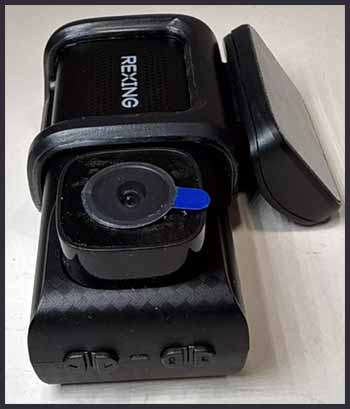
Let’s kick things off with the Rexing DT2, a dual-channel dash cam that’s a popular pick for budget-conscious drivers.
The F7NP’s 4K front camera (upscaled from 2.5K) delivers sharper daytime footage than the DT2’s 2.7K front resolution, especially for distant details like license plates.
The F7NP’s 170° front lens also captures a wider view than the DT2’s 150°, which is great for multi-lane roads.
At night, the F7NP’s F1.5 aperture pulls ahead, producing clearer footage than the DT2, which can get grainy in low light.
The Rexing DT2 fights back with a more polished app experience. Its Wi-Fi connection feels snappier than the F7NP’s occasional hiccups, and file transfers are quicker.
The DT2 also includes a buffered parking mode out of the box with its hardwire kit, capturing seconds before an impact—something the F7NP lacks.
However, the DT2’s parking mode drains batteries faster, and its bulkier design isn’t as discreet as the F7NP’s sleek 97x32x20mm frame. The F7NP’s built-in GPS, which logs speed and location, is another win over the DT2, which requires an external module for GPS.
For me, the F7NP’s superior video quality and GPS make it the better choice, but the DT2’s app and buffered parking mode might sway you if those are priorities.
- RedTiger F7NP Vs. VIOFO A229 Plus
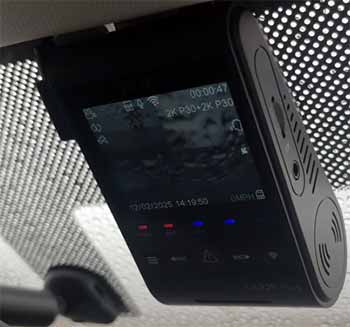
Next up is the VIOFO A229 Plus, a 2K dual-channel dash cam with a cult following.
The A229 Plus uses a Sony STARVIS 2 sensor, giving it a leg up in night vision—its footage is noticeably crisper in low light than the F7NP’s upscaled 4K.
The VIOFO’s parking mode is also more advanced, offering buffered recording and motion detection, while the F7NP sticks to basic time-lapse or G-sensor clips.
The A229 Plus’s dual-band Wi-Fi (2.4GHz and 5GHz) connects faster than the F7NP’s 2.4GHz, and its app feels more refined, with fewer connection glitches.
That said, the F7NP’s daytime footage, with its upscaled 4K resolution, looks sharper than the A229 Plus’s 2K, especially for distant objects.
The F7NP’s 3.16-inch IPS screen is also more user-friendly for on-the-spot reviews than the VIOFO’s smaller display. Price is another factor—the F7NP is generally cheaper, making it a better value for casual drivers.
The F7NP’s GPS is built into the suction mount, while the A229 Plus requires a separate module for GPS, adding to the cost. If you drive a lot at night or need robust parking features, the VIOFO edges out, but the F7NP’s affordability and daytime clarity make it a strong contender for most drivers.
- RedTiger F7NP Vs. Fitcamx Dash Cam
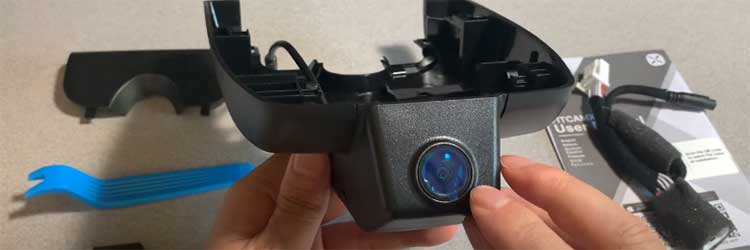
Finally, let’s talk about the Fitcamx Dash Cam, a sleek option designed to blend into your car’s interior. The Fitcamx is a vehicle-specific dash cam, meaning it’s custom-made to integrate with your car’s design, often replacing the rearview mirror cover.
This gives it a stealthy edge over the F7NP, which, while compact, is still a visible device on your windshield. The Fitcamx’s 2K front camera is decent but doesn’t match the F7NP’s upscaled 4K for daytime detail, and its 1080P rear camera is on par with the F7NP’s but struggles in low light.
The Fitcamx’s app is simpler than the RedTiger app, but it’s less versatile—you can’t tweak as many settings. The F7NP’s GPS, which logs speed and route, is a big advantage over the Fitcamx, which skips GPS entirely.
Parking mode is another area where the F7NP shines; with the hardwire kit, it offers 24-hour surveillance, while the Fitcamx’s parking mode is less reliable and often requires professional installation.
The Fitcamx’s plug-and-play setup is easier for non-techy folks, but its higher price and lack of universal compatibility (you need the right car model) make it less accessible. I’d pick the F7NP for its GPS, parking mode, and better value, but the Fitcamx is tempting if you want a nearly invisible dash cam.
Frequently Asked Questions (FAQ)
Yes, RedTiger is a Chinese brand, run by Zhoushan Panda Electronic Commerce Co. It’s based in China but has a U.S. headquarters for global operations, shipping to places like Canada and Europe. The F7NP feels designed for drivers worldwide, and their customer support has been solid in my experience.
Yes, the F7NP can record when your car is off, but you need the optional hardwire kit. This powers the 24-hour parking mode, which uses time-lapse or G-sensor clips. I’ve caught parking lot incidents with it, but make sure your car’s battery can handle the power draw.
No, the F7NP is subscription-free. All features—app, GPS, parking mode—are included with the purchase. You just need the dash cam and, for parking mode, the hardwire kit. I love that it’s a one-time cost, keeping things wallet-friendly.
Yes, VIOFO is a Chinese company based in Shenzhen. Like RedTiger, it’s a big name in dash cams, known for quality sensors and advanced features. I’ve compared its A229 Plus to the F7NP, and both brands deliver solid products despite their Chinese roots.
Wrapping It Up: Grab The RedTiger F7NP Now
The RedTiger F7NP isn’t just a dash cam; it’s your road trip buddy, your insurance ally, and your peace-of-mind provider. Its 4K clarity, easy app, and features like GPS and parking mode make it a steal for the price.
Sure, it has flaws, but the value and reliability outweigh them.
Don’t hit the road without this trusty gadget—it’s a small investment for big security. Get the F7NP today and drive with confidence.
